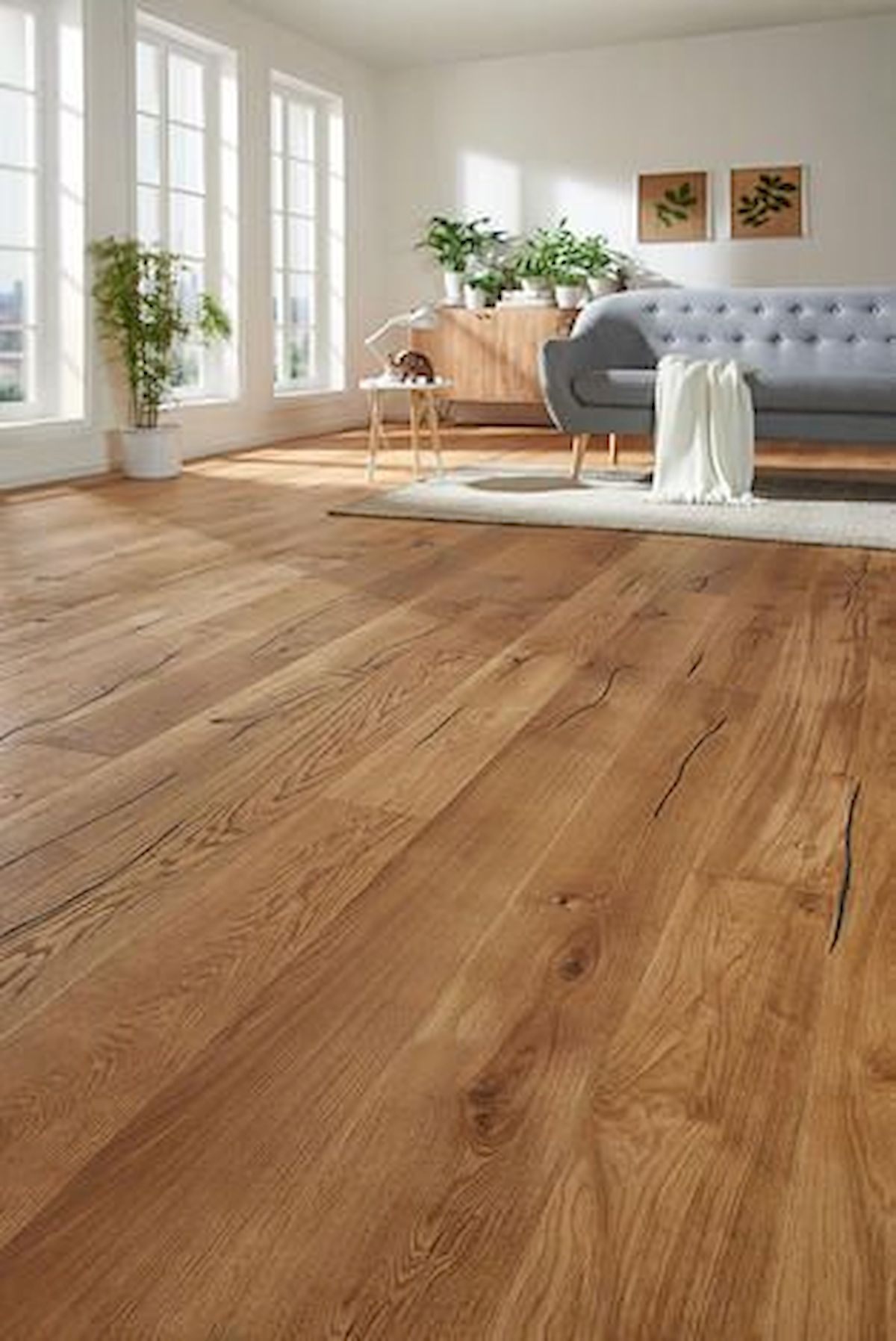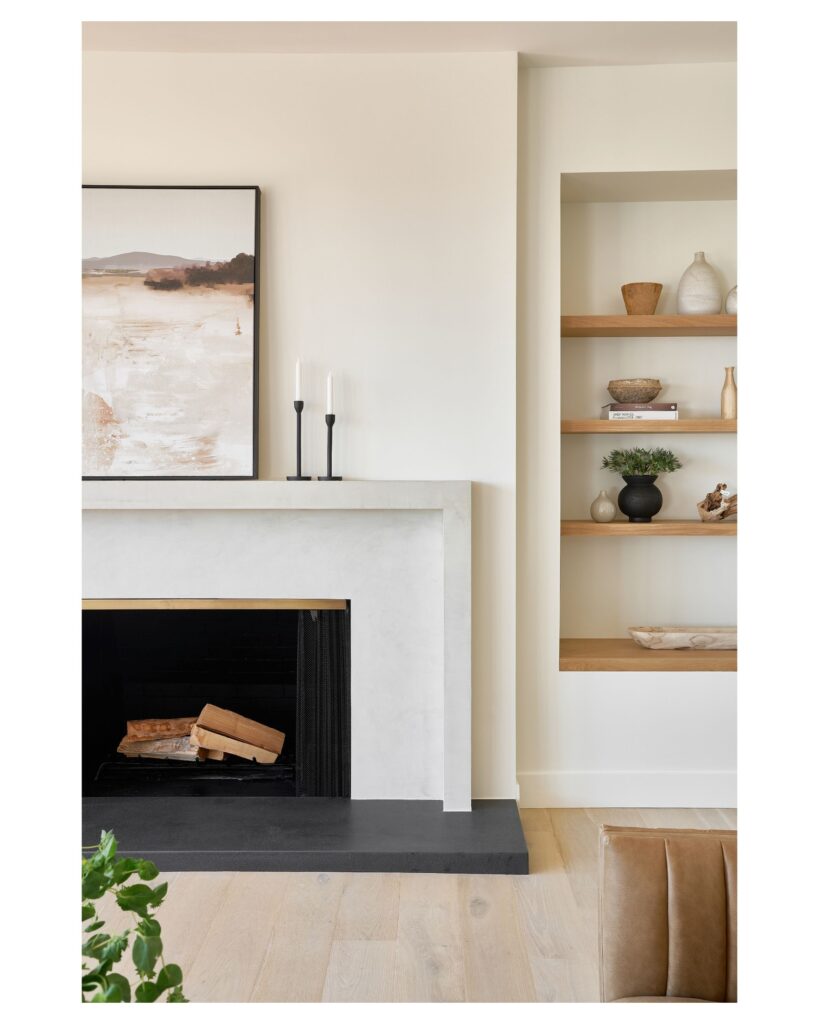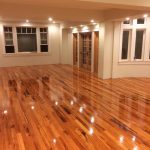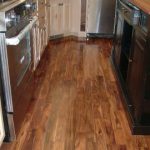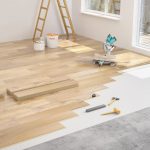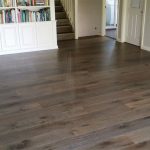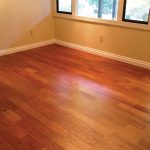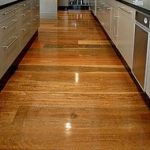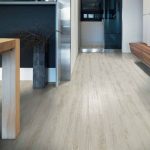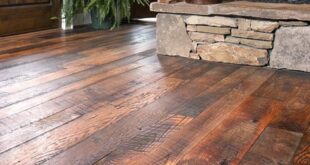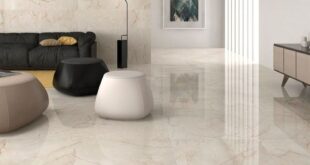Floating floors in general laminated strips with sections of wood and or fiber products pressed and glued together with a top wear layer that looks like a wood veneer or other finish glued on top. Because of the layered, or laminated nature of the product, the strips that make up a floating floor are very strong. Floating floors come in any number of colors and in several different styles. There are basically two versions of assembly for Floating floors: Click Lock and glue or staple down. Either method can be done relatively easy by a home owner with some basic tools and some ability.
Glue Type Installation:
The original method for installing floating floors has been to glue the edges of each subsequent strip of flooring, wiping up excess glue with a damp cloth as needed. This method can be messy and it also can be a source of problems long after the installation is done and the floor is in use. Because the materials in question are almost always wood based, the floor planks can absorb water and swell even when the moisture is in the air only, as in humid weather, for example. As the swelling from moisture takes place and the pieces of flooring increase in size the floor can begin to buckle. Conversely, when moisture recedes and conditions dry out, the wood will then shrink, sometimes to the extent that gaps will be in the floor between planks. The best way to combat this, aside from controlling moisture intrusion and humidity levels has been to make sure that the materials are acclimated to the conditions in the house for several days before installation.
Click Lock Installation:
A relatively new development and one that is very well received is an approach referred to as click lock. This is a form of tongue and groove edges that allows the planks in the flooring to snap together and float both over the top of the subfloor and against each other. This new form of flexibility helps where moisture penetration is concerned also in that as the member planks expand and contract more free movement is allowed, eliminating the buckling that can occur with glued together planks. As the conditions and the floor dries, there still would be contraction taking place, but the locking nature of the new assembly would prevent the degree of separation that otherwise would be there. Click lock installation serves to make homeowner installation easier yet.
 goodworksfurniture Decoration and home design ideas
goodworksfurniture Decoration and home design ideas
